708739
tBuXPhos Pd G1
別名:
t-BuXPhosパラジウム(II)フェネチルアミンクロリド, tBuXPhos-Pd-G1, [2-(ジ-tert-ブチルホスフィノ)-2',4',6'-トリイソプロピル-1,1'-ビフェニル][2-(2-アミノエチル)フェニル)]パラジウム(II)クロリド, t-BuXPhos 前触媒, t-BuXPhosパラダサイクル, クロロ[2-(ジ-tert-ブチルホスフィノ)-2',4',6'-トリイソプロピル-1,1'-ビフェニル][2-(2-アミノエチル)フェニル)]パラジウム(II)
About This Item
おすすめの製品
形状
solid
品質水準
特徴
generation 1
反応適合性
core: palladium
reaction type: Buchwald-Hartwig Cross Coupling Reaction
reaction type: Heck Reaction
reaction type: Hiyama Coupling
reaction type: Negishi Coupling
reaction type: Sonogashira Coupling
reaction type: Stille Coupling
reaction type: Suzuki-Miyaura Coupling
reagent type: catalyst
reaction type: Cross Couplings
mp
150-159 °C
官能基
phosphine
SMILES記法
NCCc1ccccc1[Pd]Cl.CC(C)c2cc(C(C)C)c(c(c2)C(C)C)-c3ccccc3P(C(C)(C)C)C(C)(C)C
InChI
1S/C29H45P.C8H10N.ClH.Pd/c1-19(2)22-17-24(20(3)4)27(25(18-22)21(5)6)23-15-13-14-16-26(23)30(28(7,8)9)29(10,11)12;9-7-6-8-4-2-1-3-5-8;;/h13-21H,1-12H3;1-4H,6-7,9H2;1H;/q;;;+1/p-1
InChI Key
LQRWNWRVOIDQOD-UHFFFAOYSA-M
法的情報
シグナルワード
Warning
危険有害性情報
危険有害性の分類
Carc. 2 - Eye Irrit. 2 - Skin Irrit. 2 - STOT SE 3
ターゲットの組織
Respiratory system
保管分類コード
11 - Combustible Solids
WGK
WGK 3
引火点(°F)
Not applicable
引火点(℃)
Not applicable
個人用保護具 (PPE)
dust mask type N95 (US), Eyeshields, Gloves
適用法令
試験研究用途を考慮した関連法令を主に挙げております。化学物質以外については、一部の情報のみ提供しています。 製品を安全かつ合法的に使用することは、使用者の義務です。最新情報により修正される場合があります。WEBの反映には時間を要することがあるため、適宜SDSをご参照ください。
労働安全衛生法名称等を表示すべき危険物及び有害物
名称等を表示すべき危険物及び有害物
労働安全衛生法名称等を通知すべき危険物及び有害物
名称等を通知すべき危険物及び有害物
Jan Code
708739-BULK:
708739-250MG:4548173924083
708739-1G:4548173924076
708739-VAR:
この製品を見ている人はこちらもチェック
ライフサイエンス、有機合成、材料科学、クロマトグラフィー、分析など、あらゆる分野の研究に経験のあるメンバーがおります。.
製品に関するお問い合わせはこちら(テクニカルサービス)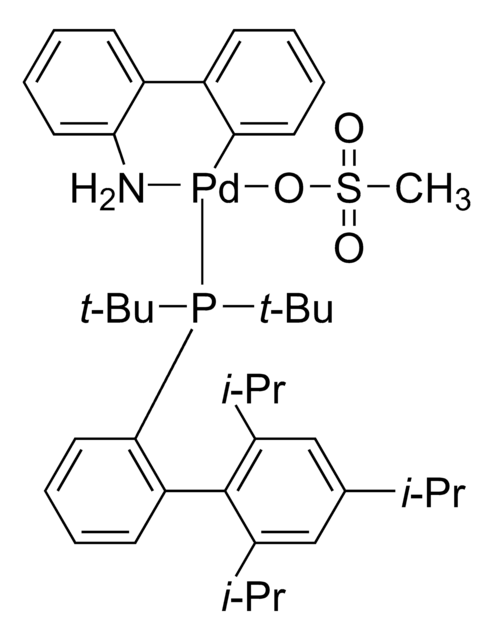
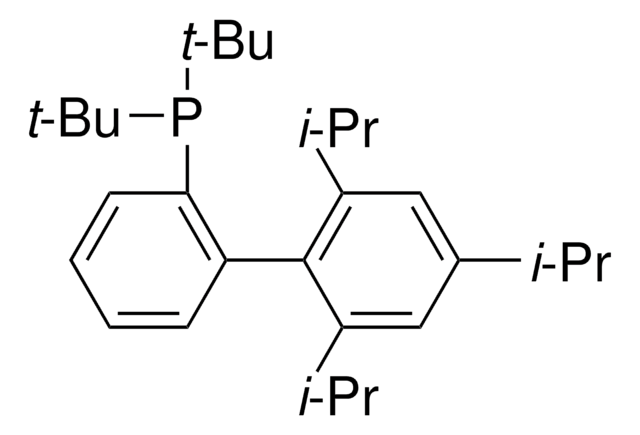
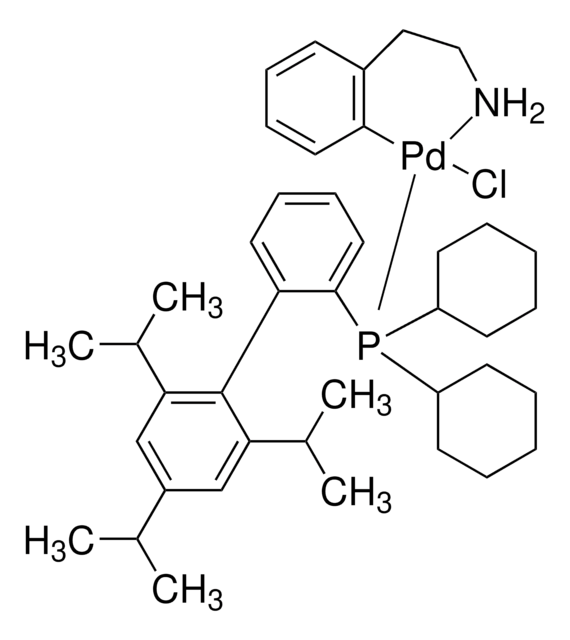
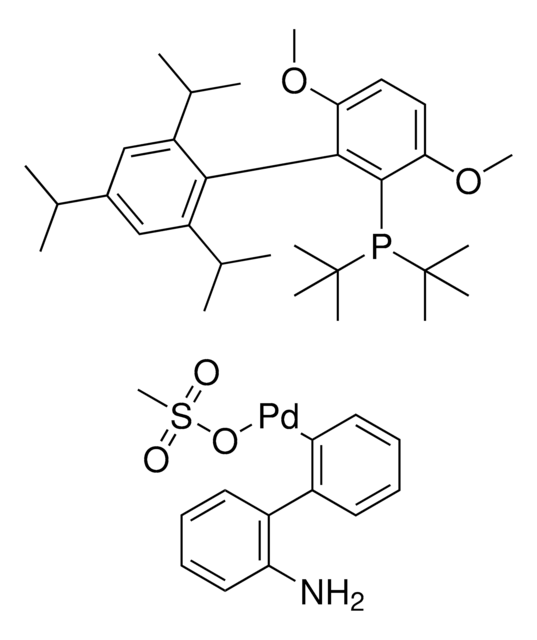
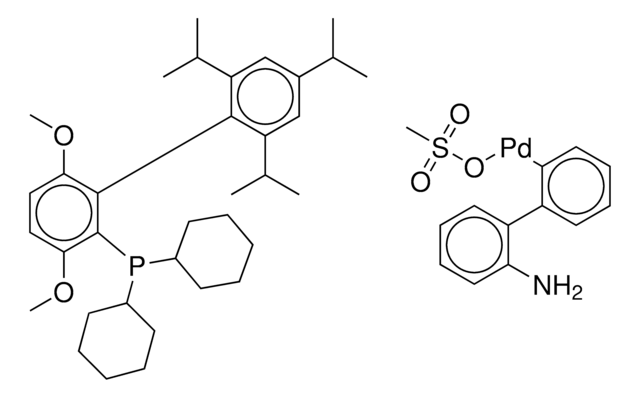
![クロロ(2-ジシクロヘキシルホスフィノ-2',4',6'-トリイソプロピル-1,1'-ビフェニル)[2-(2'-アミノ-1,1'-ビフェニル)]パラジウム(II) 98%](/deepweb/assets/sigmaaldrich/product/structures/104/769/2278ff58-262b-4fa8-9a1d-b576cdba524f/640/2278ff58-262b-4fa8-9a1d-b576cdba524f.png)
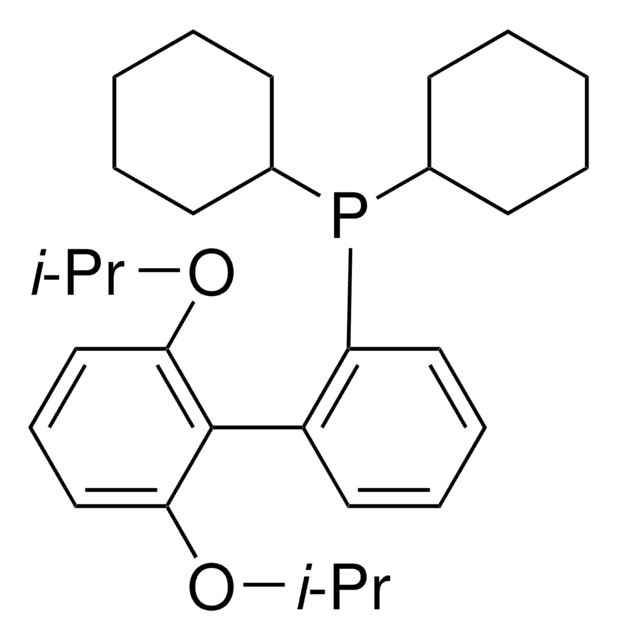
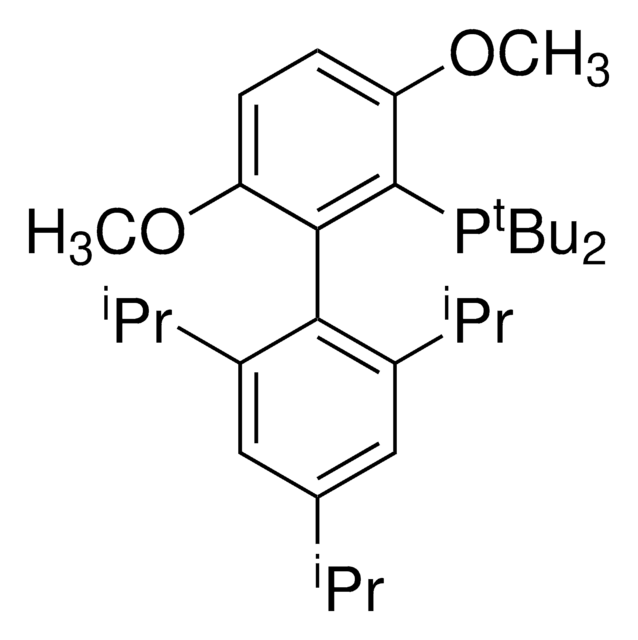



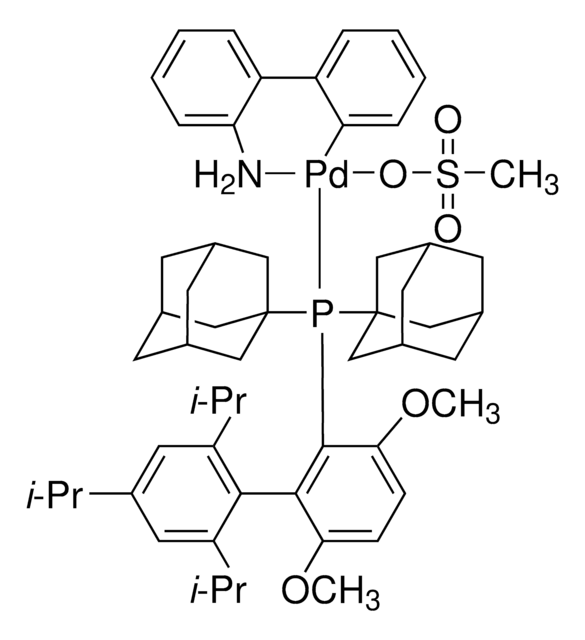
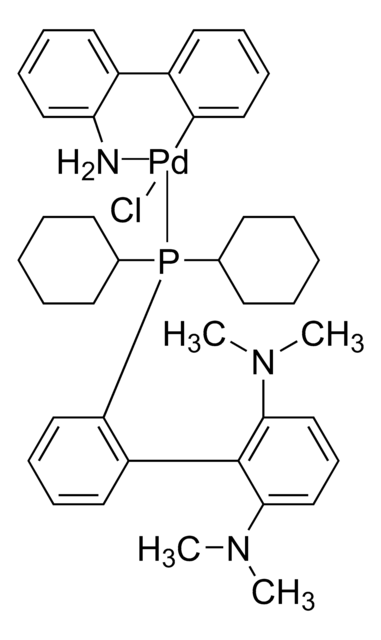
![クロロ(2-ジシクロヘキシルホスフィノ-2',6'-ジメトキシ-1,1'-ビフェニル)[2-(2-アミノエチルフェニル)]パラジウム(II)メチル-t-ブチルエーテル付加物](/deepweb/assets/sigmaaldrich/product/structures/421/182/4ca66fb3-8d93-499c-b88b-b8fe48ca97b8/640/4ca66fb3-8d93-499c-b88b-b8fe48ca97b8.png)
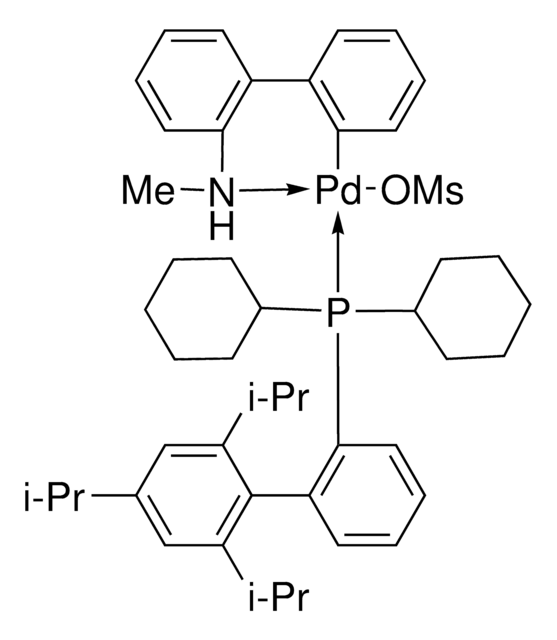
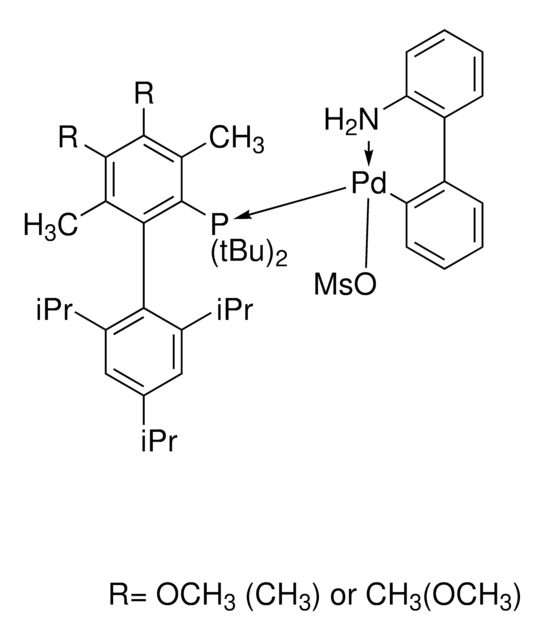
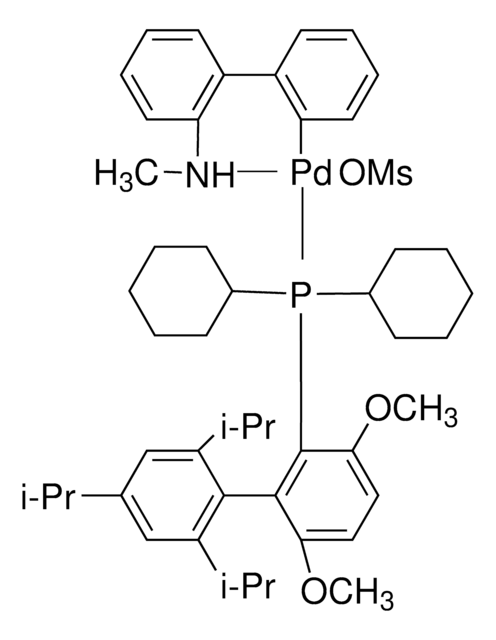
![クロロ-(2-ジシクロヘキシルホスフィノ-2',6'-ジイソプロポキシ-1,1'-ビフェニル)[2-(2-アミノエチル)フェニル]パラジウム(II)-メチル-t-ブチルエーテル付加物 95%](/deepweb/assets/sigmaaldrich/product/structures/176/620/0ff76ec6-d361-4f7a-a777-45780811b3c0/640/0ff76ec6-d361-4f7a-a777-45780811b3c0.png)